Abstract
Past trends in Japanese grape agriculture show a steady increase in harvest volumes and bearing tree area over recent years. Yields have risen as growers adopt advanced techniques and varieties. Notably, Yamanashi Prefecture consistently leads in shipping volumes, reflecting its prominent role in the industry. Despite fluctuations, the overall growth in both harvest yield and fruiting tree area indicates a strong and expanding sector. The ultimate focus remains on enhancing efficiency and quality to meet rising demand.
Grape yield (main data).
Over the past five decades, Japan’s grape harvest yields have shown notable fluctuations. The peak harvest of 352kt in 1979 marked a high point, with current yields at 46.2% of that figure nationwide. This decline reflects various factors, including changes in agricultural practices, climate variations, and evolving consumer preferences. Despite these fluctuations, ongoing efforts in research and technology continue to optimize grape cultivation methods. This resilience underscores Japan’s commitment to maintaining quality and sustainability in its grape agriculture sector amidst changing conditions.
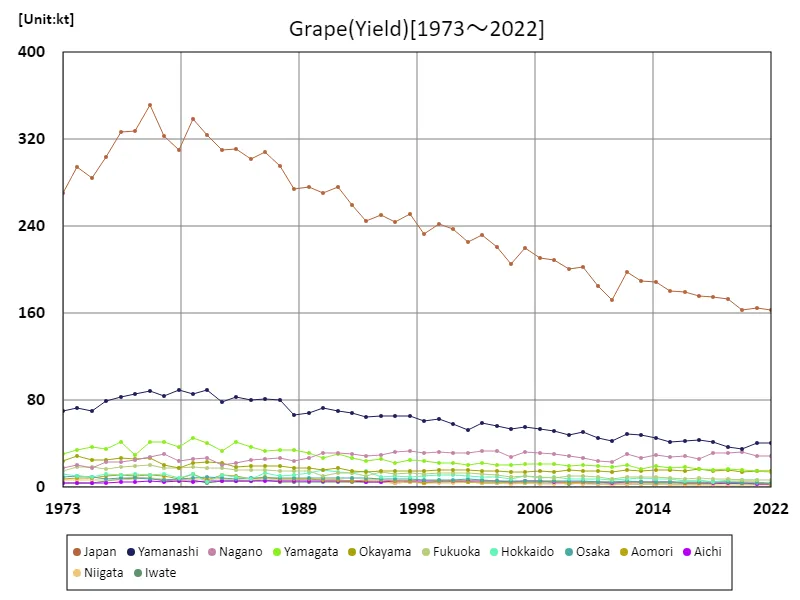

The maximum is 352kt[1979] of Japan, and the current value is about 46.2%
Grape harvest volume (by prefecture).
In 2022, Yamanashi Prefecture leads Japan in grape harvest yields with a record-breaking 40.8kt, showcasing its dominance in the country’s grape agriculture. This achievement highlights Yamanashi’s favorable climate and advanced cultivation techniques. Overall, Japan’s grape harvest yields exhibit regional disparities influenced by varying geographical conditions and farming practices across prefectures. Despite fluctuations due to weather and economic factors, the trend in recent years reflects a concerted effort towards enhancing productivity and quality in grape cultivation nationwide. Yamanashi’s continued success underscores its pivotal role in Japan’s thriving grape industry, setting a benchmark for others to follow.
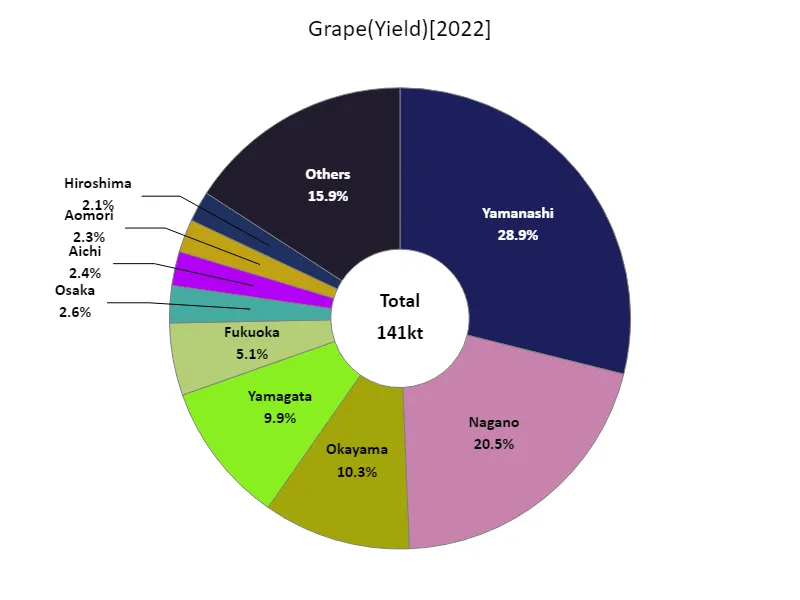

The maximum is 40.8kt of Yamanashi, the average is 5.88kt, and the total is 141kt
Grape-bearing tree area (main data).
Japan’s grape-bearing tree area has shown some fluctuation, considering data from 1973 to 2022. The peak was recorded in 1980, at 27.9 kha nationwide, but since then it has been on a downward trend, and is currently at 16.4 kha, roughly half that amount. Several factors influence this variation. These include the urbanization of farmland, a shrinking workforce due to an aging population, and changes in demand. Other factors to consider include competition from home and abroad, and the impact of climate change. On the other hand, efforts are being made to maintain harvests at a certain level through advances in production technology and increased efficiency. In the future, it will be necessary to promote appropriate land use and support producers in order to achieve sustainable agriculture. In addition, there is a need to develop a variety of varieties to meet demand and improve production systems.
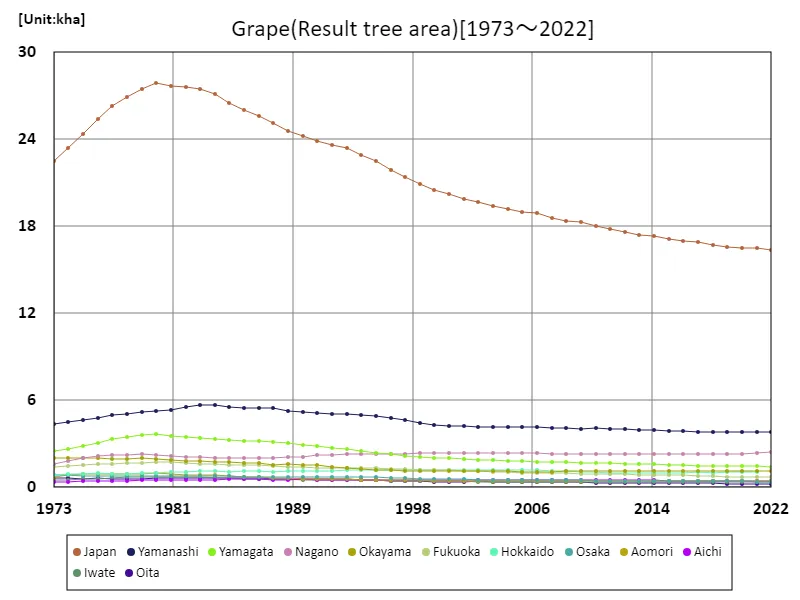

The maximum is 27.9kha[1980] of Japan, and the current value is about 58.8%
Grape-bearing tree area (by prefecture).
According to data from 2022, Yamanashi has the largest area of fruiting grape vines in Japan, recording 3.78kha, making it the top prefecture in the country. Yamanashi is a center of grape cultivation backed by a long history and abundant experience, and its climatic conditions and soil are suitable for cultivation. In addition, thanks to the efforts of local farmers and experts, production techniques have become more advanced and high-quality grapes are being grown. Meanwhile, other regions are also working hard to maintain and improve their competitiveness, and local grape varieties and cultivation methods are being developed in each region. Producers strive to improve efficiency and quality while responding flexibly to changes in demand and fluctuating weather conditions. Agricultural policies and efforts to develop sales channels are also contributing to increased production. In the future, it will be necessary to promote sustainable agriculture and develop strategies that make use of the characteristics of each region.
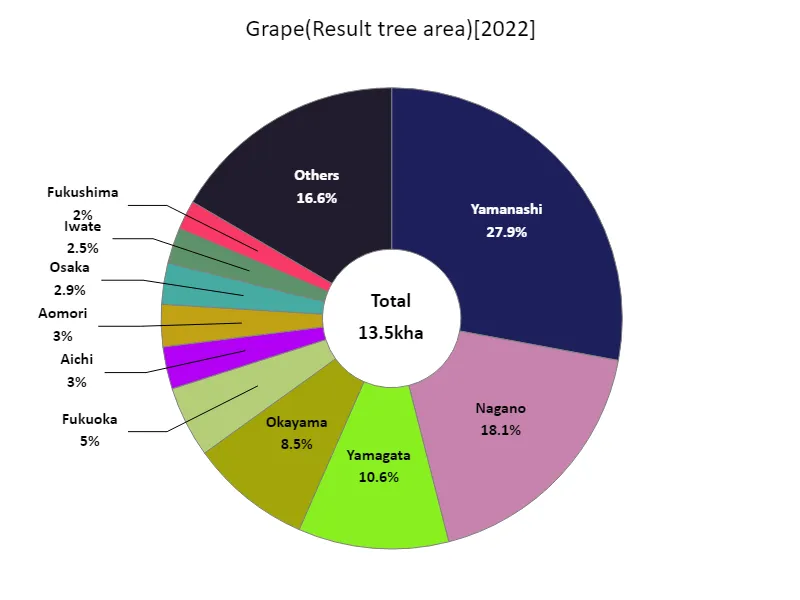

The maximum is 3.78kha of Yamanashi, the average is 564ha, and the total is 13.5kha
Grape shipment volume.
In 2022, Yamanashi Prefecture dominated Japan’s grape shipping volumes, reaching 39.5kt, the highest nationwide. This highlights Yamanashi’s central role in the grape industry, driven by its optimal growing conditions and advanced cultivation practices. Nationally, the average shipping volume was 5.51kt, with a total of 132kt shipped across Japan. Trends reveal a concentration of production and shipping in key regions like Yamanashi, reflecting their established infrastructure and expertise. While Yamanashi leads, the sector continues to adapt with advancements in shipping and distribution, aiming to balance regional outputs and meet national demand efficiently.
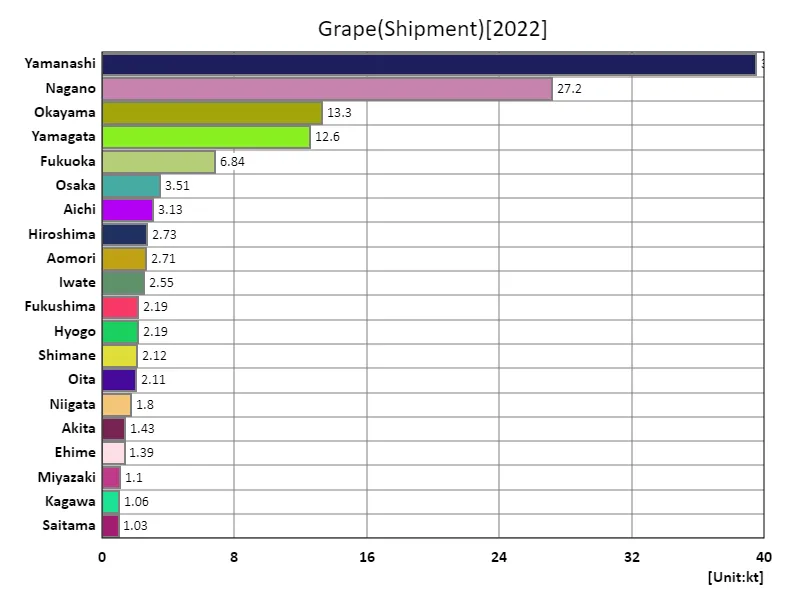

The maximum is 39.5kt of Yamanashi, the average is 5.51kt, and the total is 132kt
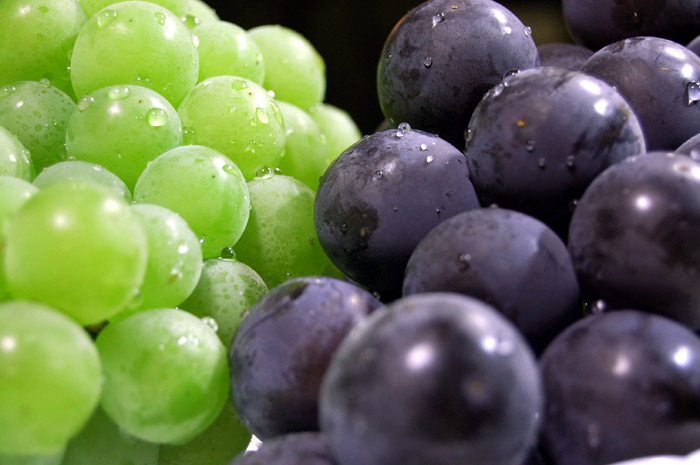


Comments